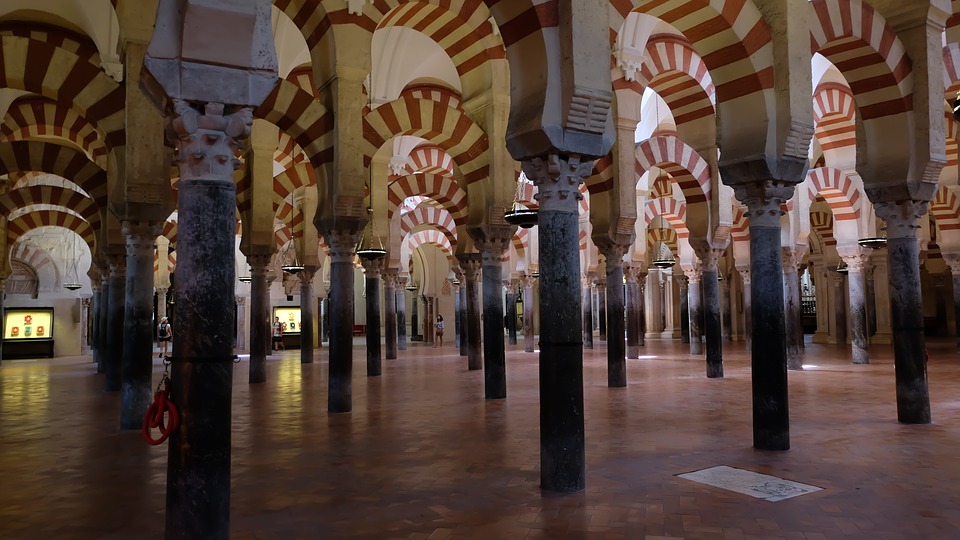Mezquita

It is commonly believed that the site of the Mosque-Cathedral was originally a Christian church dedicated to Saint Vincent the Third, which was divided and shared by Muslims and Christians after the Islamic conquest of the Visigothic kingdom.[18][13][14] This sharing arrangement of the site lasted until 784, when the Christian half was purchased by the Emir Abd al-Rahman I, who then proceeded to demolish the original structure and build the grand mosque of Córdoba on its ground.[13][19] This narrative, which goes back to the tenth-century historian al-Razi, echoed similar narratives of the Islamic conquest of Syria, in particular the story of building the Great Mosque of Damascus.[18][12] For medieval Muslim historians, these parallels served to highlight a dynastic Umayyad conquest of Spain and appropriation of the Visigothic Córdoba.[18][12] The historicity of this narrative has been challenged,[11] as archaeological evidence is scant, nor is the narrative corroborated by contemporary accounts of the events following Abd al-Rahman I's initial arrival in al-Andalus.[12] Another tenth-century source mentions a church that stood at the site of the mosque without giving further details.[12] However, it is almost certain that the building which housed the original mosque was destroyed to build the first version of the Great Mosque.[11] An archaeological exhibit in the Mosque–Cathedral of Cordoba displays fragments of a Visigothic building, emphasizing an originally Christian nature of the complex.[20][21] According to Susana Calvo Capilla, a specialist on the history of the Mosque–Cathedral, although remains of multiple church-like buildings have been located on the territory of the Mosque-Cathedral complex, no clear archaeological evidence has been found of where either the church of St. Vincent or the first mosque were located on the site, and the latter may have been a newly constructed building. The evidence suggests that it may have been the grounds of an episcopal complex rather than a particular church which were initially divided between Muslims and Christians.[21][22]
